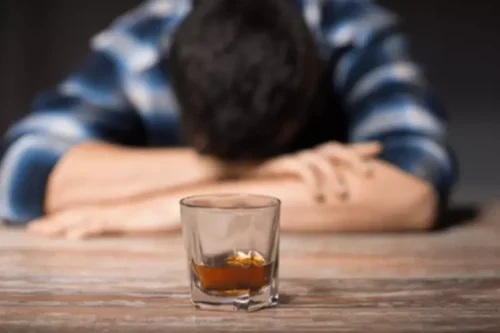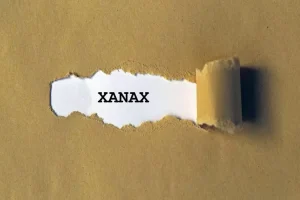
Depending on how long you have used alcohol and how much you typically drink, the severity of these symptoms can range from mild to severe. The frequency and setting for outpatient monitoring of AWS should be guided by symptom severity, risk of complications, and social factors, including reliable social support and a safe home environment. Most patients will require daily evaluations for up to five days after their last drink, but evaluations may increase or decrease in frequency as alcohol withdrawal necessitated by changes in symptom severity.8 These visits can be with any health care professional. Blood pressure, pulse, and alcohol breath analysis should be obtained whenever possible. The assessment should also include a validated measure of withdrawal symptom severity, ideally with the same instrument as the initial assessment. For this reason, there have been many attempts to classify symptoms of AWS either by severity or time of onset to facilitate prediction and outcome.
Check your symptoms

The alcohol withdrawal timeline varies, but the worst of the symptoms typically wear off after 72 hours. People who are daily or heavy drinkers may need medical support to quit. Stopping drinking abruptly can lead to seizures and can even be fatal. Severe and complicated alcohol withdrawal requires treatment in a hospital — sometimes in the ICU. While receiving treatment, healthcare providers will want to monitor you continuously to make sure you don’t develop life-threatening complications.
- For example, some people may experience mild nausea with no vomiting, while others may have severe nausea and frequent vomiting or dry heaving.
- Not surprisingly, most symptoms of withdrawal are symptoms that occur when the brain is overstimulated.
- A total score of 15 or more points indicates that the patient is at increased risk for severe withdrawal effects, such as confusion and seizures.
- If you already have alcohol use disorder, it’s important to seek counseling and medical care as soon as possible.
- Still, if you’re experiencing alcohol withdrawal, it’s essential to have your symptoms evaluated by a medical professional.
- It’s important first to get evaluated by a medical professional and to reach out to a support system if you’re able.
Common Alcohol Withdrawal Symptoms
Mild withdrawal symptoms often begin within 6 to 12 hours after your last drink. There are several mild to moderate psychological and physical symptoms you might experience when you stop drinking. This article discusses the causes, common symptoms, and different stages of alcohol withdrawal.
Symptoms of Alcohol Withdrawal: Timeline and Signs of Danger
Commonly used medicines in this group include chlordiazepoxide (Librium) and lorazepam (Ativan). If you have withdrawal symptoms from drinking, then you have consumed enough alcohol to damage other organs. It is a good idea for your doctor to examine you carefully and do blood tests, checking for alcohol-related damage to your liver, heart, the nerves in your feet, blood cell counts, and gastrointestinal tract. Your doctor will evaluate your usual diet and check for vitamin deficiencies because poor nutrition is common when someone is dependent on alcohol. If you feel that you sometimes drink too much alcohol, or your drinking is causing problems, or if your family is concerned about your drinking, talk with your health care provider.

Conversely, in some alcoholics withdrawal symptoms can occur at blood alcohol concentrations (BAC’s) that would be intoxicating in non-alcohol-dependent people but which for the dependent patients represent a decline from their usual BAC’s. Every year more than one-and-a-half million people in the United States either enter alcoholism treatment or are admitted to a general hospital because of medical consequences resulting from alcohol dependence. These patients, as well as a substantial number of other people who stop drinking without seeking professional treatment, experience alcohol withdrawal (AW). AW is a clinical syndrome that affects people accustomed to regular alcohol intake who either decrease their alcohol consumption or stop drinking completely. In these people, the central nervous system (CNS) has adjusted to the constant presence of alcohol in the body and compensates for alcohol’s depressive effects on both brain function and the communication among nerve cells (i.e., neurons). Consequently, when the alcohol level is suddenly lowered, the brain remains in a hyperactive, or hyperexcited, state, causing withdrawal syndrome.

In the United States, most states have low-cost or free rehabilitation programs for those who are uninsured. Research shows people who have a supportive social network are more likely to remain https://ecosoberhouse.com/ alcohol-free after withdrawal. Those with a wider circle of support have a better chance of staying sober. Alcohol (ethanol) depresses (slows down) your central nervous system (CNS).
Find the best treatments and procedures for you

- Although multiple seizures are not common, AW is one of the most common causes in the United States of status epilepticus—a medical emergency characterized by continuous, unrelenting seizures.
- About five percent of the patients who experience DT’s die from metabolic or cardiovascular complications, trauma, or infections (Victor and Adams 1953; Cutshall 1964).
- While these symptoms are more severe than Stage 1, they are not life-threatening.
- Consuming more than that can lead to liver damage and heart disease, and increase your risk for some cancers.
- However, sleep disturbances, irritability, and fatigue may continue for months.
